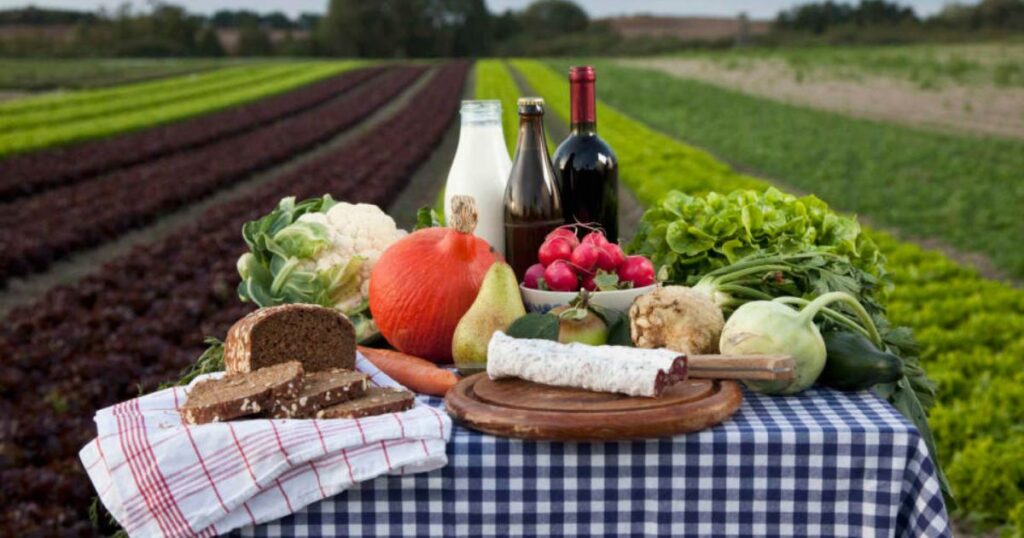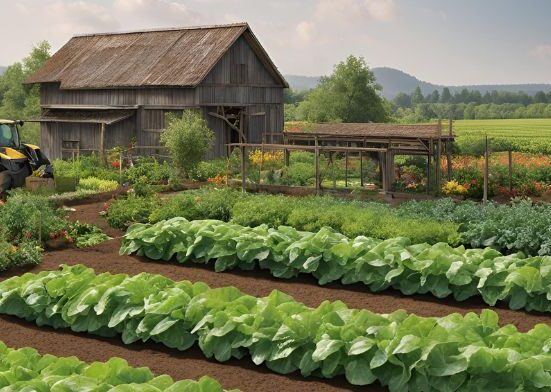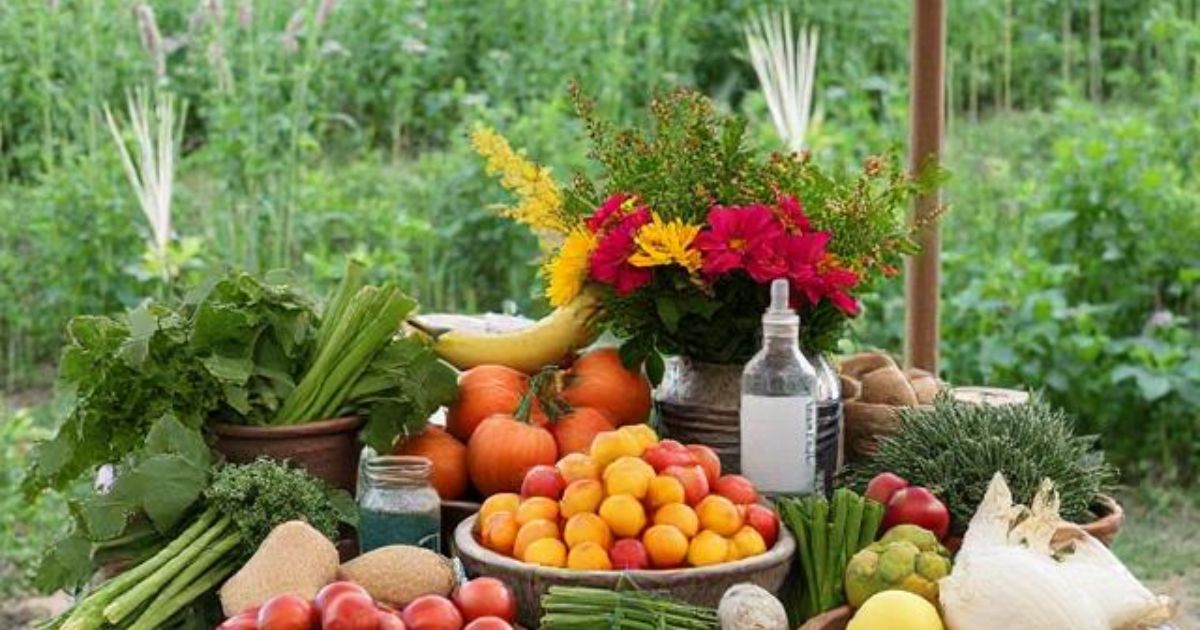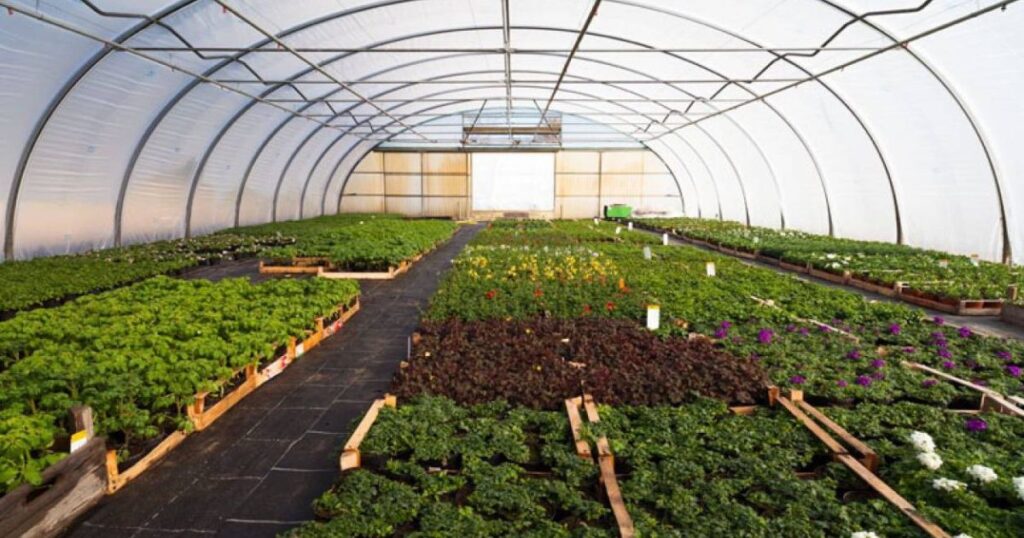The Phrase farm to table has become a buzzword in the culinary and sustainability worlds. Yet, it’s much more than a passing trend. It’s a powerful concept that bridges the gap between food production and consumption. It is a movement that emphasizes the direct connection between farmers, food producers, and consumers, allowing us to experience the authentic flavors of food grown in harmony with nature. But what exactly does the farm-to-table journey entail? And why does it matter in today’s world? In this blog post, we’ll take you on a farm-to-table journey from when a seed is planted to when a meal is served at your table, exploring the benefits, challenges, and everything in between.
Brief overview of the Farm to Table Movement
The Farm to Table movement is a growing trend emphasizing sourcing food directly from local farms to restaurants, markets, and consumers. It promotes sustainable agriculture, reduces the environmental impact of food transportation, and supports local economies. The movement encourages the consumption of fresh, seasonal, and often organic produce, which is seen as healthier and more flavorful than mass-produced Eco-Friendly Farming alternatives.
Farm-to-table practices also foster a stronger connection between consumers and the origins of their food, allowing them to understand the agricultural processes better and support ethical farming practices. This movement has gained significant momentum in recent years as people seek more transparency in food production and a way to combat the adverse effects of industrial agriculture. Overall, farm-to-table represents a shift toward more sustainable, responsible, and conscious eating, with benefits for both the environment and local communities.
The Seeds of the Journey: The Farm

The Far” paints a vivid picture of a humble yet essential beginning. Nestled in the heart of the countryside, the farm represents more than just land—it embodies the roots of life’s journey. As the sun rises over fertile fields, the earth whispers of generations past, each seed sown with care and purpose. The rustle of leaves in the wind and the scent of freshly turned soil evoke a sense of renewal and possibility. Here, amidst the simple rhythms of planting, tending, and harvesting, dreams take astor farm to table root.
Every crop that grows is a testament to hard work and perseverance, while the steady flow of seasons reminds us of life’s inevitable cycles. The farm is both a literal and symbolic starting point, where the journey begins with small steps, nurturing growth and setting the stage for all that lies ahead in the great adventure of farm to table restaurants near me life.
Choosing the Right Farm
For those following the Farm to Table route, the first step is selecting a farm. Local farms that emphasize sustainable farming practices are at the heart of this movement. These farms, often family-owned or operated by small cooperatives, focus on quality over quantity. Produce is typically grown without harmful pesticides or fertilizers, and livestock is raised with more humane, ethical practices. Many farm-to-table advocates prioritize organic farming, which avoids synthetic chemicals and focuses on building healthy, biodiverse ecosystems.
The Role of Farmers in Sustainability
Farmers are the stewards of the land. Through hard work and dedication, they are the first to witness the changes in seasons, the cycles of planting, growing, and harvesting. Farmers working within the Farm to Table movement embrace their role not only as food producers but also as protectors of the environment. By focusing on sustainable agricultural methods, they are helping to reduce the carbon footprint of food production and minimize the ecological damage that comes from large-scale industrial catherine’s farm to table farming.
Harvest Time: The Fruits of Labor
Harvest Time: The Fruits of Labo” captures the culmination of a season’s hard work. As golden sunlight bathes the fields, the once-young crops stand tall, ripe with promise. The air is thick with the scent of earth and fresh produce, a sweet reward for months of care and dedication. Every fruit plucked from the vines, every stalk cut from the soil, tells a story of patience, skill, and determination. The workers, hands stained with the fruits of their labor, move with purpose, collecting nature’s bounty that will sustain and nourish them in the months to come.
There’s a sense of triumph and gratitude in the harvest, a recognition that this moment of abundance is not just about the result but about the journey that led here. The farm, once barren, now overflows with life and sustenance, marking a well-earned victory for all who have toiled in its el huerto farm to table soil.
The Timing of Harvest
Timing is everything when it comes to harvesting. A well-timed harvest ensures that the food is at its peak of flavor, nutrition, and texture. Whether it’s vegetables, fruits, or grains, the timing of when to pick or gather determines how well the food will be stored and its taste when it reaches your table. Farm-to-table advocates believe in harvesting foods at their peak, allowing for the freshest and most flavorful dishes possible. Farmers often harvest their crops in small batches to ensure quality. They may bring fresh produce straight from the field to local farmers’ markets, food cooperatives, or restaurants in a matter of hours, ensuring the food is consumed while it’s still at its best.
The Harvest: Bringing the Food to Market
When it is time for harvest, the food is carefully gathered and prepared for market. Unlike the bulk production methods used by larger commercial farms, farm-to-table produce is typically handled with care. Harvesting is done by hand or with minimal machinery to preserve the integrity of the crops. This is especially important for delicate fruits and vegetables like berries, which require gentler handling to jeremy’s farm to table menuavoid bruising.
Once harvested, the food is often delivered to local farmers’ markets or directly to restaurants that emphasize local sourcing. For example, a farm in a region might sell its produce to a chef at a farm-to-table restaurant that showcases local ingredients on its prime farm to table menu.
The Importance of Freshness
The freshness of food harvested for the farm-to-table movement cannot be overstated. Fresh food contains higher levels of vitamins, minerals, and other essential nutrients. It is also more flavorful because it hasn’t been transported long distances or stored for extended periods. The freshness of food not only makes a noticeable difference in taste but also helps to reduce food waste. With farm-to-table, the emphasis is on buying and consuming what is in season, ensuring that it is used before it spoils, and contributing to a more sustainable food tati farm to table system.
From the Field to the Table: The Path to the Consumer

From the Field to the Table: The Path to the Consume” explores the transformative journey of food as it moves from the hands of farmers to the plates of consumers. It begins in the rich, expansive fields where crops are cultivated with care and attention, rooted in sustainable practices. After harvest, the produce is carefully packed and transported, undergoing various stages of processing, packaging, and distribution to ensure freshness and quality. Along the way, dedicated workers help preserve the integrity of the food at every step. Retailers then bring these products to local markets and grocery stores, where consumers have the final opportunity to choose what will nourish them.
This journey is a complex network of people, places, and processes, all working in harmony to bring wholesome, nutritious food from the earth directly to the dining table, reinforcing the deep connection between producers and consumers. farm to table’’
Markets and Local Distribution
Many farm-to-table enthusiasts seek out farmers’ markets as their primary source of fresh produce. Farmers’ markets are typically held weekly, offering residents the opportunity to purchase fresh fruits, vegetables, and other foodstuffs directly from the producers. These markets are an excellent way for consumers to connect with the people who grow their food and learn more about sustainable farming practices. Some farms also partner with food cooperatives or community-supported agriculture (CSA) programs, where consumers can buy a subscription for weekly or monthly deliveries of fresh produce. These models help create a direct relationship between consumers and farmers, cutting out the middleman and supporting local farm to table near me economies.
The Role of Restaurants in the Farm-to-Table Movement
In addition to home cooking, restaurants play a significant role in the farm-to-table movement. Many chefs are now committed to sourcing their ingredients locally, working directly with farmers to ensure that only the freshest, highest-quality produce and meats are used in their kitchens. Farm-to-table restaurants often feature seasonal menus, where the dishes are based on what is currently available farm to table restaurants at the peak of freshness.
For consumers, dining at a Table restaurant offers not only a chance to support local farmers but also an opportunity to experience food that has been prepared with an emphasis on sustainability and seasonality. These restaurants often pride themselves on creating dishes that honor the ingredients, letting the natural flavors shine through without excessive processing or heavy farm to table Saltwater Farming seasoning.
A New Connection with Food
The farm-to-table movement encourages us to think differently about the food we consume. It’s about more than just eating—it’s about reconnecting with the source of our food, learning where it comes from, and understanding the effort that goes into producing it. For many, this journey helps to build a deeper appreciation for food. It encourages individuals to eat more seasonally, try new foods, and support local economies. It can also lead to a more mindful approach to cooking, where meals are crafted with care and intention. The farm-to-table journey encourages consumers to slow down and appreciate the entire process, from planting the seed to enjoying the meal.
Cultural and Community Impact
The farm-to-table movement also has a cultural and community impact. As people reconnect with food, they begin to value local food traditions and regional specialties. This movement opens the door to preserving Indigenous crops, traditional farming practices, and local food heritage. Additionally, farm-to-table initiatives can help revitalize local communities. By supporting local farmers and food producers, individuals and businesses can contribute to the economic sustainability of their region. Whether through farmers’ markets, CSA programs, or partnerships with local restaurants, this model fosters a sense of community where everyone plays a role in creating a more sustainable food system.
Challenges and the Future of Farm to table
While the farm-to-table movement has gained significant traction in recent years, it’s not without its challenges. Local food systems often struggle with issues like access to land, weather dependency, and scaling up operations to meet growing demand. In some regions, food access can be a significant barrier, as many low-income communities don’t have easy access to fresh, local produce. Additionally, small-scale farmers can face financial difficulties competing against larger agricultural businesses that benefit from economies of scale. However, many see these challenges as opportunities for innovation, with the development of more sustainable and equitable food systems, such as urban farming, food cooperatives, and direct-to-consumer models.
Looking ahead, the future of farm-to-table seems promising. As consumers become more conscious of where their food comes from and demand more sustainable practices, farmers, chefs, and food producers will continue to innovate and find ways to meet this demand. With a focus on sustainability, ethical farming practices, and community engagement, the farm-to-table journey will likely continue to grow and evolve.
Sustainability and the Future of Harvesting
As the global population continues to grow, the demand for food increases. This poses significant challenges for farmers, who must find ways to produce more food while minimizing the environmental impact. In recent years, sustainable farming practices have gained traction, with many farmers adopting methods that focus on soil health, water conservation, and biodiversity.
Sustainable harvest practices maximize yield and ensure that future generations can continue to enjoy the bounty of the land. This means minimizing the use of harmful chemicals, reducing waste, and promoting farming techniques that work in harmony with nature.
Environmental Impact:
The environmental impact refers to the effect that human activities and industrial processes have on the natural environment. This includes the depletion of natural resources, pollution, loss of biodiversity, climate change, and ecosystem disruption. Everyday activities like deforestation, fossil fuel combustion, and waste production contribute significantly to environmental degradation. However, adopting sustainable practices like renewable energy, recycling, and eco-friendly technologies can reduce these negative impacts and help restore the balance in nature.
Economic Benefits:
Economic benefits refer to the positive financial effects of specific actions, policies, or industries on a country’s economy or business environment. This could include increased job creation, growth in trade and investment, improved productivity, or the development of new markets. For example, the green economy—focused on sustainability—can generate economic growth through green technology innovation, job creation in renewable energy sectors, and savings from energy efficiency.
The Benefits of Farm-to-Table
 The Farm to Table movement is much more than just a trend—it offers a wide range of benefits that go beyond just great food. Let’s take a look at some of the key advantages:
The Farm to Table movement is much more than just a trend—it offers a wide range of benefits that go beyond just great food. Let’s take a look at some of the key advantages:
- Freshness and Flavor: Farm-to-table food is harvested at its peak ripeness, meaning it’s fresher and more flavorful than mass-produced alternatives.
- Healthier Food: Locally grown, organic produce often contains fewer pesticides and chemicals, making it a healthier option for consumers.
- Supporting Local Economies: By purchasing from local farmers and producers, consumers are helping to support small businesses and keep money within their communities.
- Environmental Benefits: Sustainable farming practices help protect the environment by minimizing the use of synthetic fertilizers, pesticides, and other chemicals.
- Seasonal Eating: Eating with the seasons allows consumers to experience a greater variety of produce throughout the year while also encouraging a deeper connection with the rhythms of nature.
- Ethical Sourcing: Farm-to-table chefs often prioritize humane and ethical treatment of animals, ensuring that meat and other animal products are sourced responsibly.
Conclusion:
The journey from harvest to home is a full-circle experience that reminds us of the interconnectedness of our food, our environment, and our farm to table communities. It’s about more than just food on a plate; it’s about creating relationships with those who grow our food, supporting local economies, and embracing sustainable practices that benefit future generations. Whether you buy your produce from a local farmer’s market, dine at a restaurant that prioritizes locally sourced ingredients, or grow your garden, the farm-to-table journey allows us to reconnect with our food in a meaningful way.
FAQ:
What is “Harvest Time: The Farm to Table?
It celebrates the efforts put into cultivating crops and the joy of reaping the rewards. It acknowledges the hard work of farmers, gardeners, and workers who tend to the land and appreciate the seasonal bounty that is harvested.
When does the Harvest Season Typically Occur?
The harvest season varies depending on the type of crop and the region. In general, harvest time in many places occurs from late summer to early fall, typically from August to October. However, certain crops, like winter vegetables, might be harvested earlier or later.
Why is Harvest Time so Important?
Harvesting is a crucial stage in the agricultural cycle. It marks the culmination of months of hard work, careful planning, and plant nurturing. The success of the harvest directly impacts food production and distribution, making it essential to the economy, culture, and nutrition of many communities.
What are the Main Fruits Harvested During this Time?
Common fruits harvested during the harvest season include apples, pears, grapes, pumpkins, berries, and citrus fruits. However, the types of fruits can vary by region and climate.
What Happens During the Harvest Festival?
Harvest festivals are community events that celebrate the bounty of the season. They often feature food, music, dancing, games, and the sharing of harvest-related stories. Many festivals also honor the work of farmers and agricultural workers, offering them a moment to relax and enjoy the fruits of their labor.








